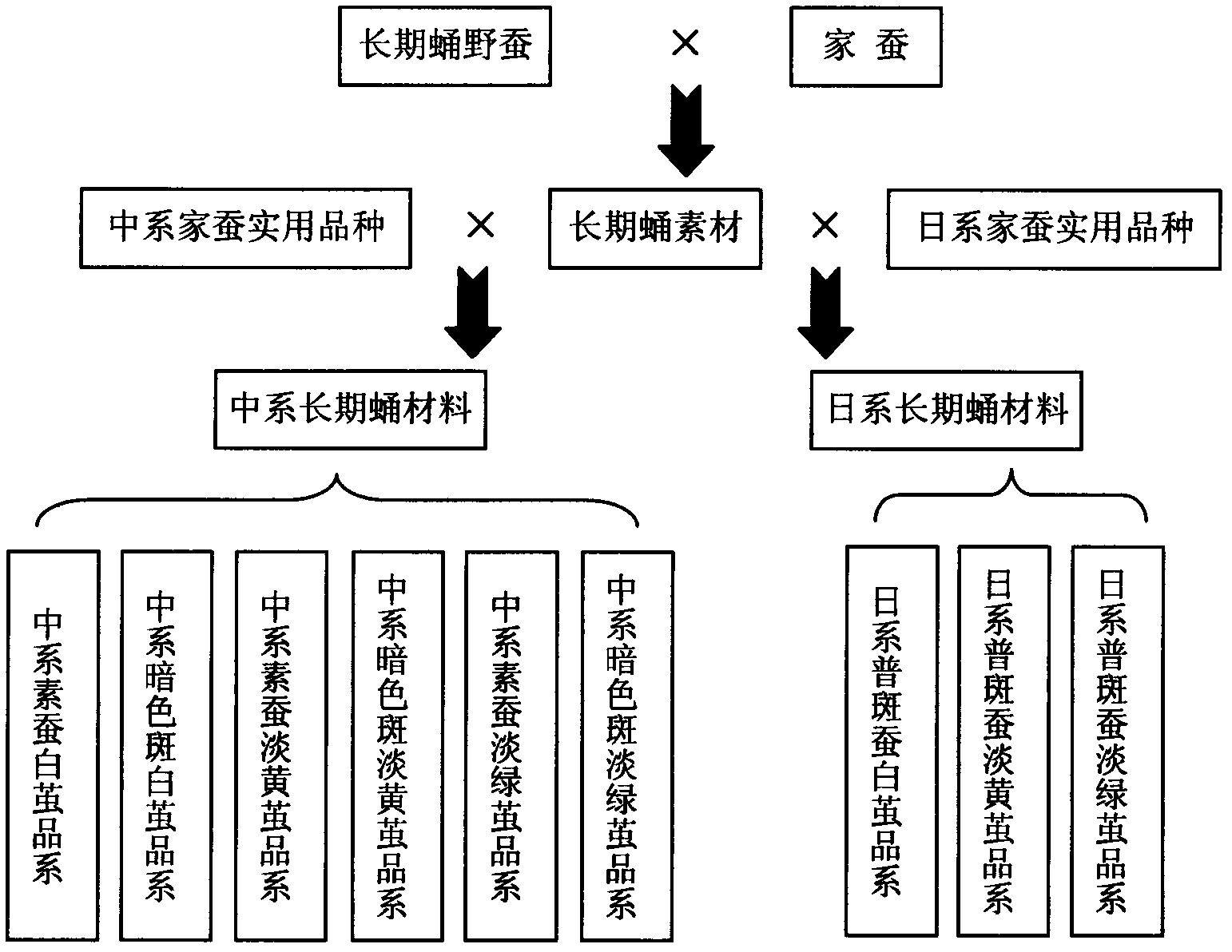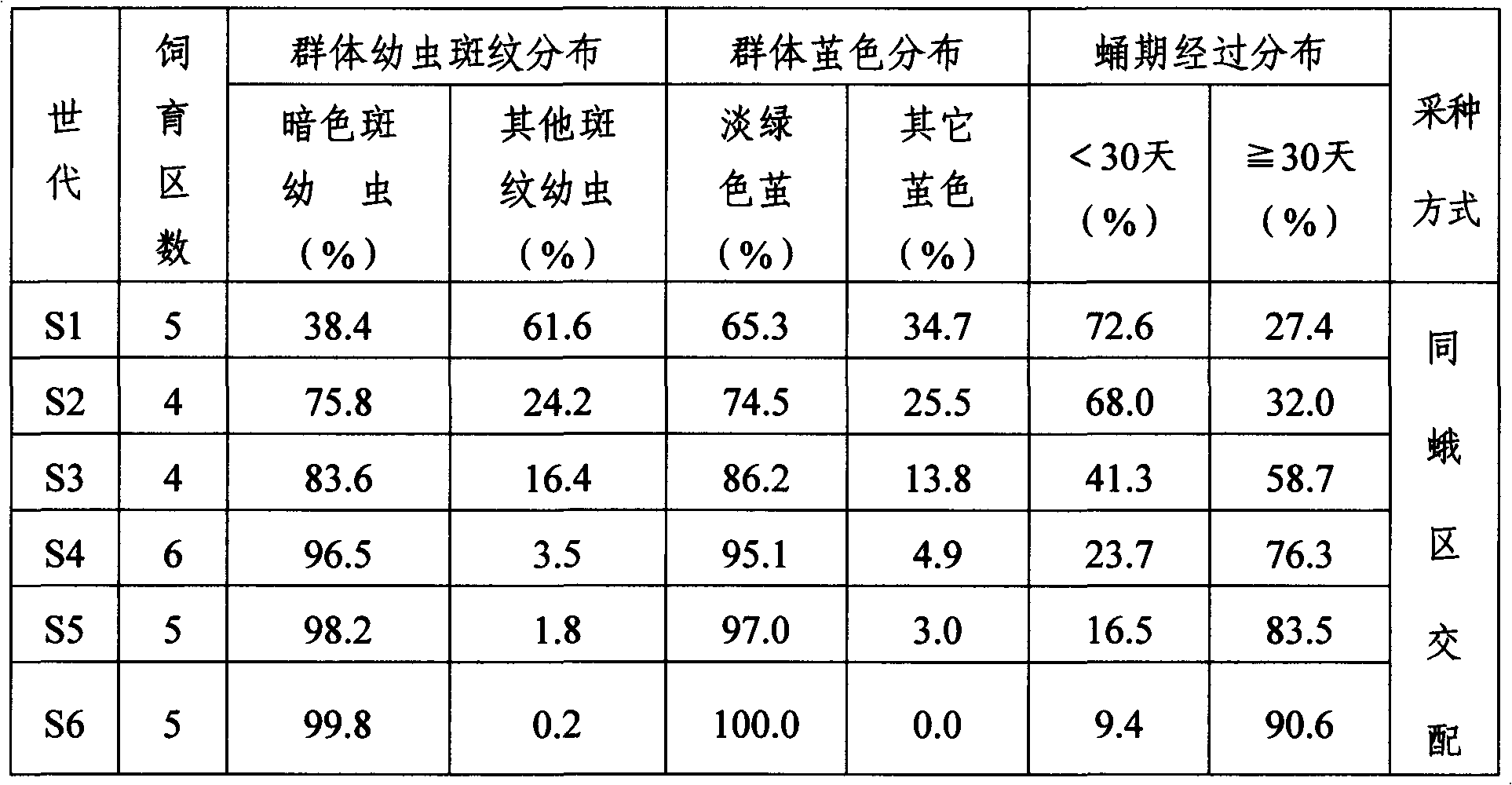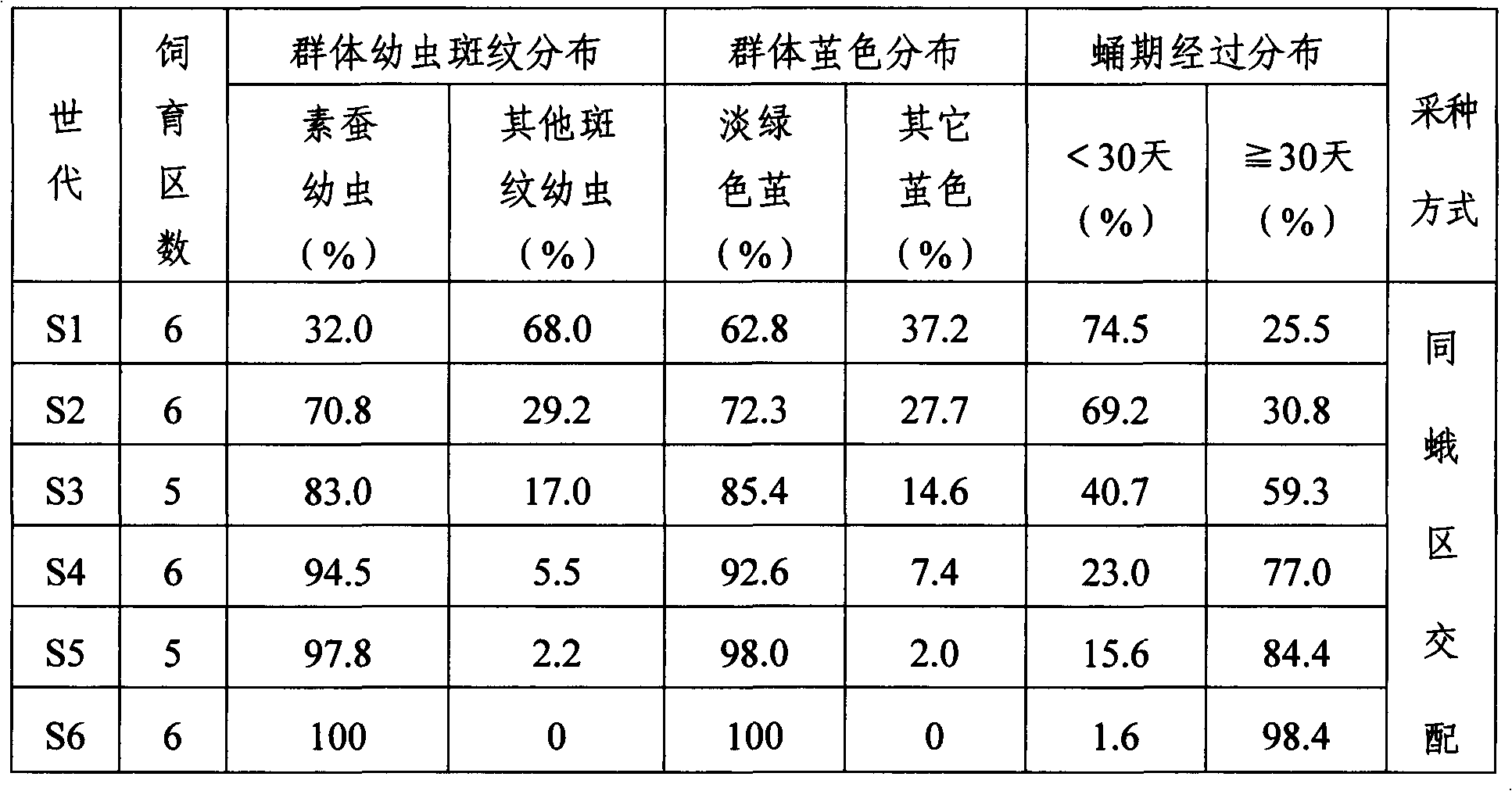Method for selecting long-term domestic silkworm pupa new material by crossing domestic silkworms and wild silkworms
A long-term pupa and wild silkworm technology, applied in animal husbandry and other directions, can solve the problems of decreased silkworm cocoon unwinding rate, loss of fresh raw materials, and poor silk quality.
- Summary
- Abstract
- Description
- Claims
- Application Information
AI Technical Summary
Problems solved by technology
Method used
Image
Examples
Embodiment Construction
[0016] (1) Long-term pupal gene transfer from wild silkworm to silkworm
[0017] Wild silkworms were collected from abandoned mulberry gardens in Peng'an County, Sichuan Province, and raised indoors in a simulated field environment. Cuttings of mulberry branches with leaves were placed in flowerpots, and replaced every 2 days to keep the mulberry leaves from withering, and wild silkworms were placed on them. The outer cover is covered with an anti-insect net to prevent the damage of rats and insects and the escape of wild silkworms. The larvae of wild silkworm are slender and slender, with anthracite-gray body color and irregular markings; the cocoon is small, spindle-shaped, yellow-colored and thin-cocoon-layered; a male pupa emerges after 48 days of the pupal period, and the moth body is black-gray. The chrysalis of wild mulberry silkworm has a long pupal period, and there is no purebred silkworm to mate with it when it emerges. The female moth of the production species "871...
PUM
 Login to View More
Login to View More Abstract
Description
Claims
Application Information
 Login to View More
Login to View More - R&D
- Intellectual Property
- Life Sciences
- Materials
- Tech Scout
- Unparalleled Data Quality
- Higher Quality Content
- 60% Fewer Hallucinations
Browse by: Latest US Patents, China's latest patents, Technical Efficacy Thesaurus, Application Domain, Technology Topic, Popular Technical Reports.
© 2025 PatSnap. All rights reserved.Legal|Privacy policy|Modern Slavery Act Transparency Statement|Sitemap|About US| Contact US: help@patsnap.com



